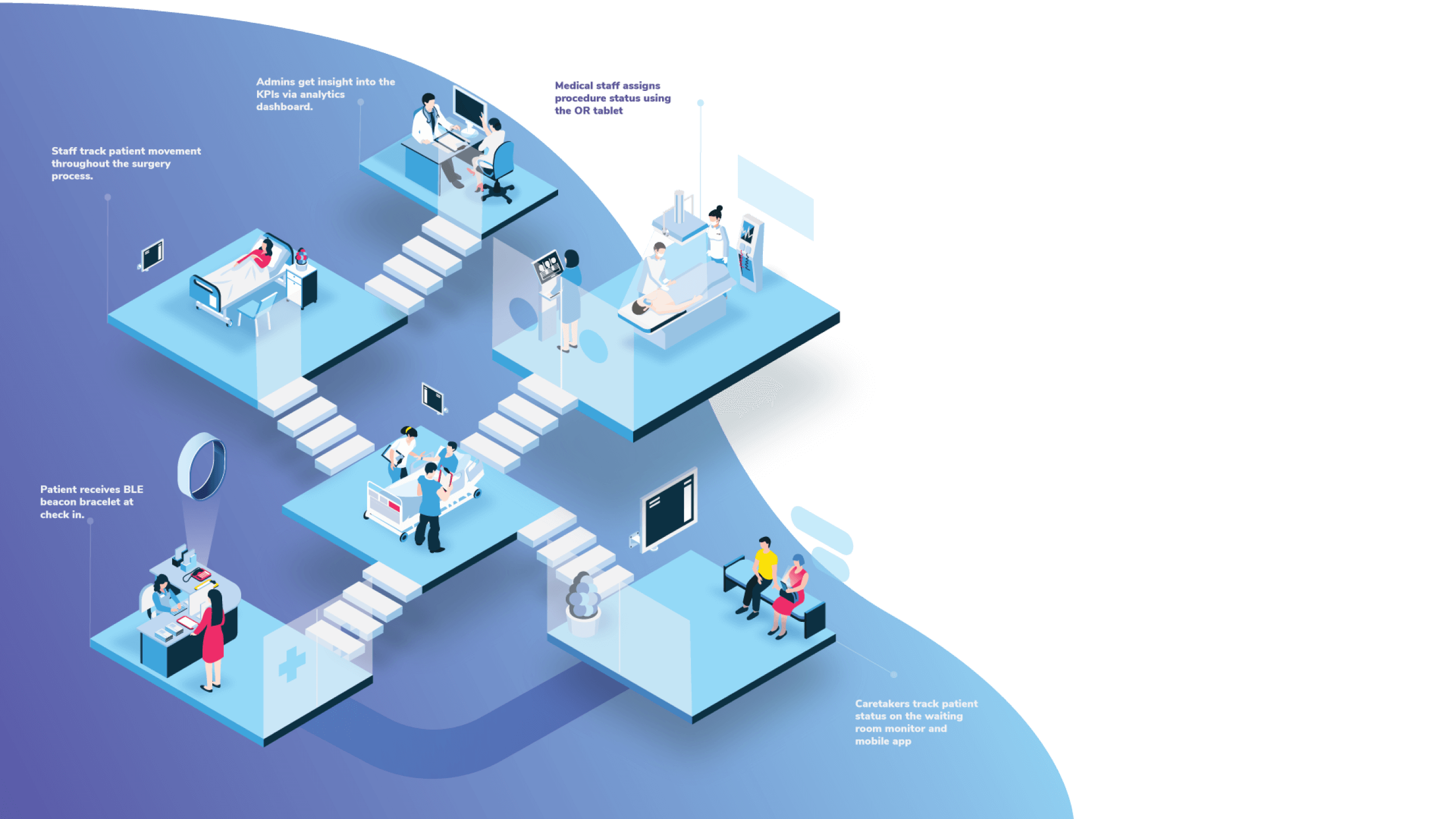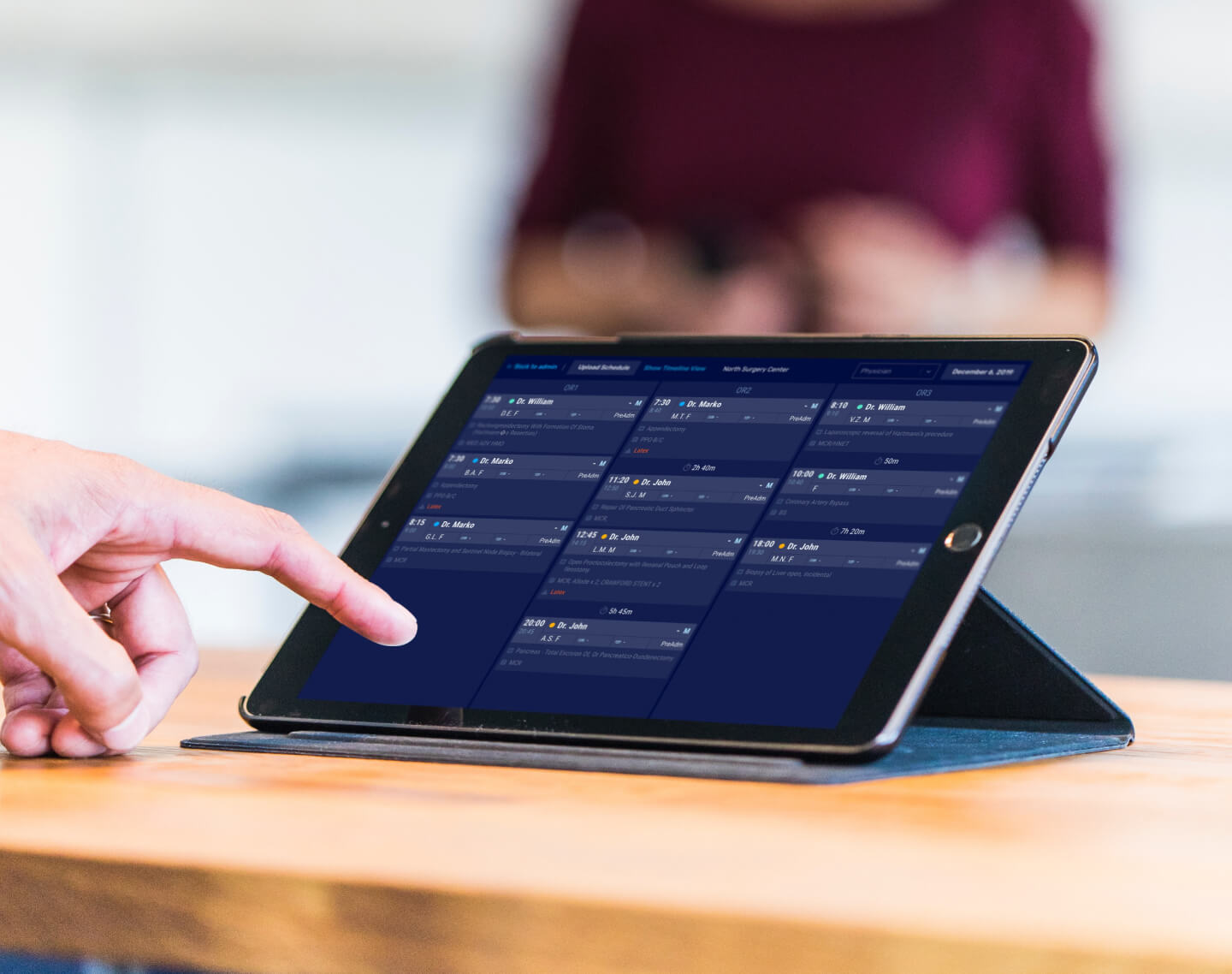Product. UX/UI Design. Engineering. Maintenance.
SpiceFactory helps health tech companies engineer and design scalable, responsive, and user-centric solutions.
Project Overview
Ospitek is a healthcare technology provider focused on delivering enterprise software and technology solutions that enable better patient experience and workforce productivity. Ospitek approached us to help them build Ospitek View - a software that enables efficient surgery center operations from patient registration, surgery journey, and follow up. Over time it expanded into internal and external communication tool and patient record enrichment platform.
Working with Ospitek, we’ve built a system that provides backend business operation apps as well as patient-facing apps. Capabilities include:
- Digital patient registration
- Family member monitoring screen and app
- Physician and nursing staff applications
- BLE patient journey tracking
- In-surgery monitors and apps
- Schedule of procedures
- Analytics dashboard
- Ratings
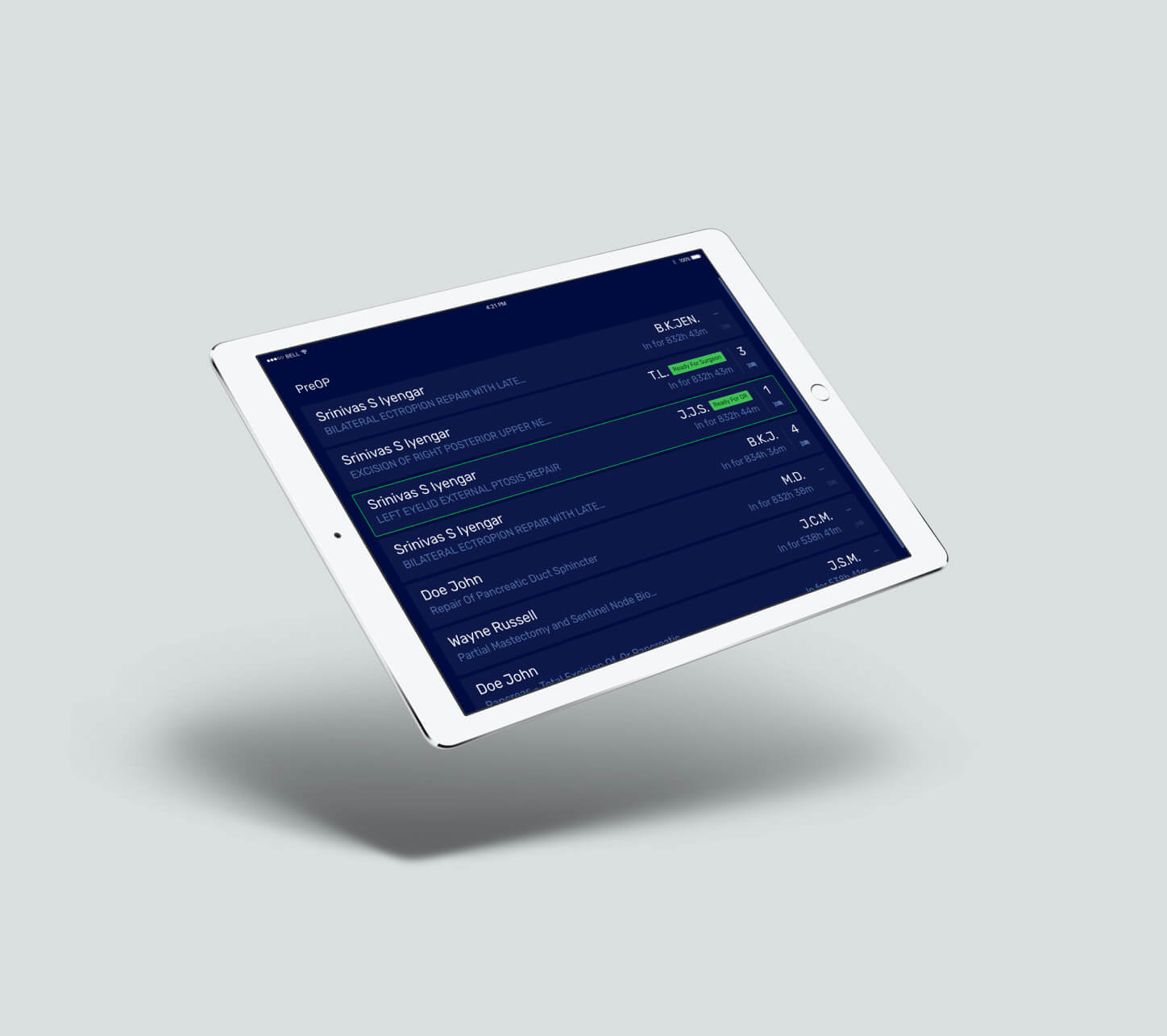
Frustrations caused by long waiting times or unknowns in the surgery process are big issue. Ospitek helps eliminate it.
Ospitek View
View is an IoT patient management SaaS platform that maximizes operational efficiencies of surgical centers while enabling families to monitor the journey of their loved ones from patient registration to patient discharge.
The platform allows tracking patient movement and their status via BLE beacon bracelets. Additionally, it includes various interactive screens for OR, Prep and Recovery areas with many display monitors throughout the building. The software provides a way to easily setup and control what is shown on display panels and devices in one central place.
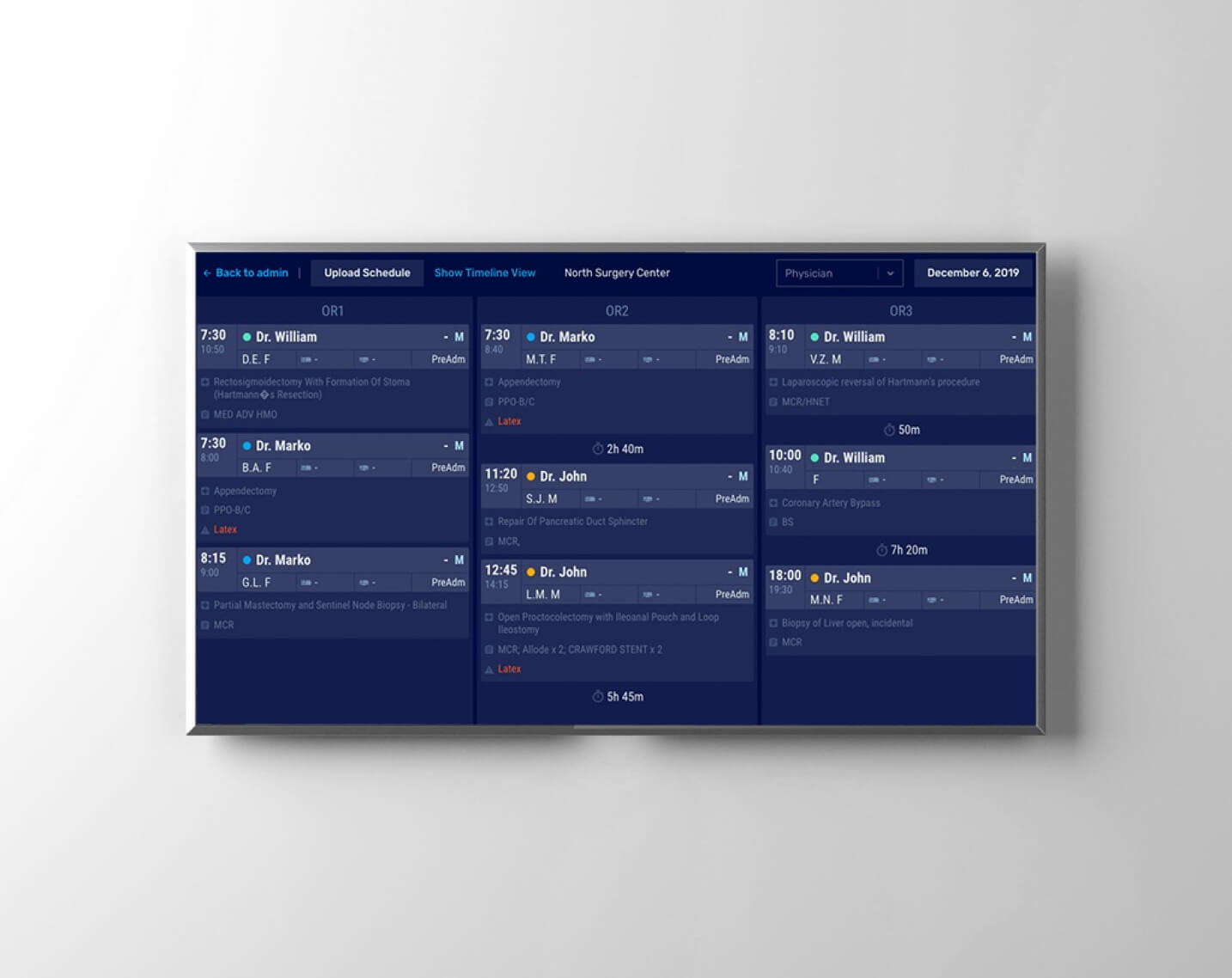
View is built as a HIPAA compliant system and security, data logging, and notification mechanisms are in place to quickly resolve any issue that may occur. Privacy controls are built into the system so that permissions and access rights are centrally configured. Built-in user roles provide different levels of access for hospital staff, with predefined roles set for the following:
- Admin
- PreOP nurse
- Nursing
- Business manager
- Operations manager
- Front desk
Analytics Dashboard
Surgery centers need to continuously improve their service and optimize asset utilization and management. To be able to do this, staff need to have insight into the KPIs using data gathered by the system. The interface focuses on displaying relevant information that is aligned with business goals, including average waiting room time, average PRE-OP time, OR utilization, average OR time, and average PACU time, with additional custom reports and date export capabilities.
The filters can be combined to produce a very specific set of aggregated data. This way, the analytics are very flexible and capable of showing data with different levels of granularity.
Monitoring screens
View introduces digital monitors at key points in the surgical center to enable smooth staff communication:
- Waiting room monitor
- PreOP tablet
- Operation Room (OR) tablet
- Operation screen monitor
- Recovery tablet
- Schedule screen monitor
Staff can monitor patient movement throughout the surgery process and have easy-to-adopt visual cues which help them understand the situation with a quick glance.

Hospital Staff Mobile App
Patients are given BLE bracelets at the check-in to wear during their stay at the surgical center. The signal from the bracelets is then tracked with bluetooth gateways and sent to the View system for processing. Hospital staff can view and manage patient journey data from the Web app.
This web app is PWA - using React as the UI layer and following best practices. It is offline first with web manifest data in place. The app detects mobile user and prompts for installation. Additional apps are provided for tablets for in OR use as well monitoring and interaction in other rooms.

Patient Apps
Patients have multiple ways to monitor the surgery progress i.e. via waiting room screen and via web (PWA) which be installed as a mobile app, enabling caregivers to track patient status (i.e. admitted, pre-op, OR, recovery, able to visit) from their mobile device. Additionally there is a notification mechanism so that the caretaker receives an SMS with a link to a family member page that they can use to track the status of the patient.
Additional app is provided to patients to pre-fill the surgery forms. This saved tremendous time for the patients and helped staff in the surgery centers increase their performance and focus on delivering the best care. Each patient receives his dedicated link via sms and can fill in the date on his mobile or desktop.
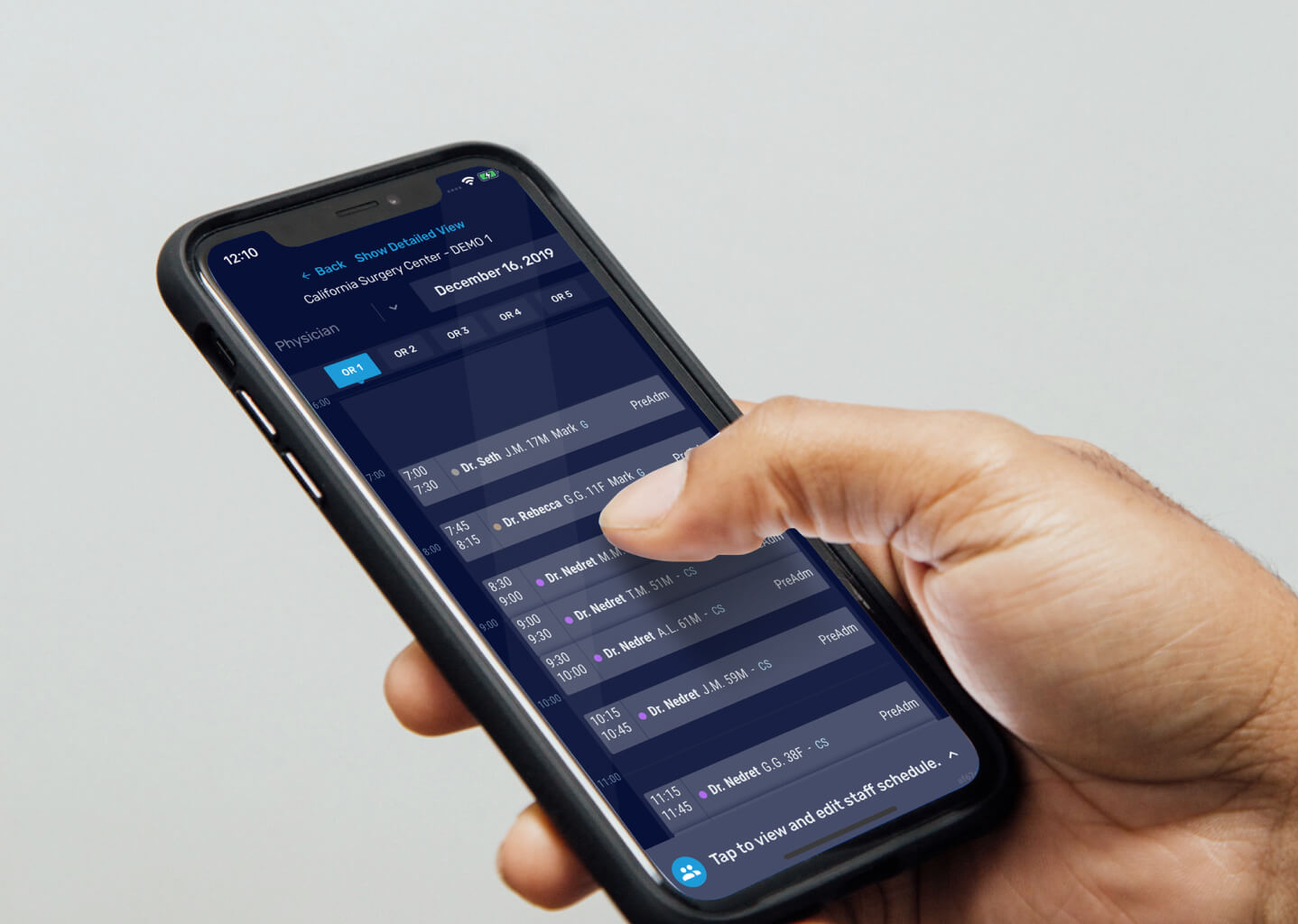
Enabling Real-time Data Exchange
GraphQL is used as a data query language for mobile and desktop clients. GraphQL provides a structured schema that rigorously defines all data endpoints and it serves the purpose of an intermediary data validator. Web sockets are used as a primary networking protocol. This enables an event-driven system that would push new data to all clients as soon as it’s available in real-time.
Infrastructure backend is developed in Scala, heavily relying on Akka. Akka streams provide an easy way of writing application logic as a graph looking structure, with side effects dispatched at the edges of the data transformation pipelines that drives actions across the application, such as notification sending, complex business logic implementation, scheduling operation, rules engine, etc.
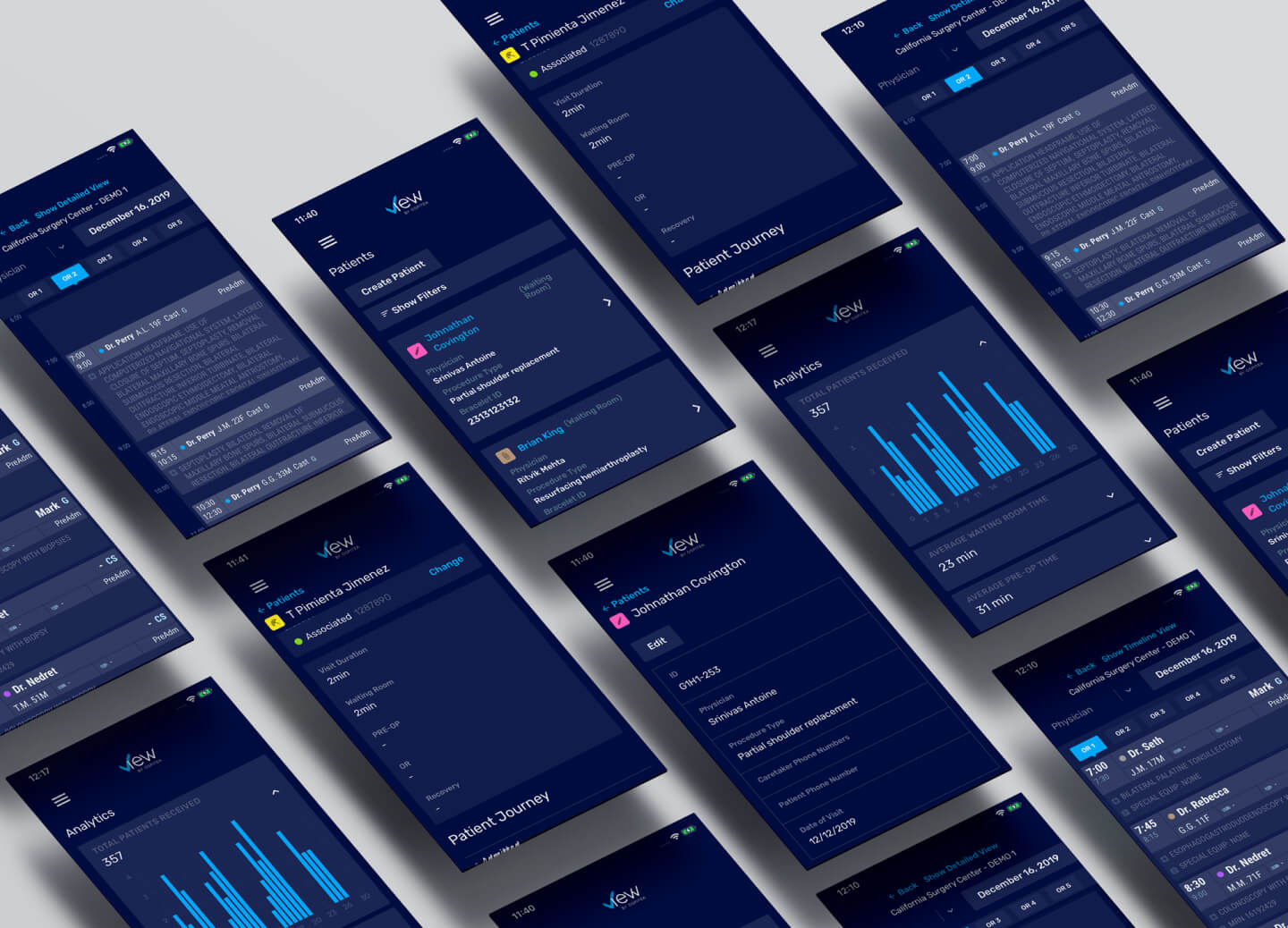
BLE Edge Devices
The backbone of the tracking system is a bluetooth gateway that acts as an edge on-premises IoT device and sends periodical reports to View API of the current bluetooth beacon RSSI levels. Application backend listens to the reports and employs rolling data transformations in order to make sense of the live data. Every active bracelet is modeled as an actor in a system that reacts to gateway signal data and other system-defined signals, such as manual user actions or transition rules defined for the surgery center. This enables the system to track patients as they move across the surgery center.
Data from the gateways is transmitted using MQTT protocol, in order to keep the network traffic throughput at an absolute minimum. MQTT is designed to be a protocol of choice for IoT applications with peak data efficiency being up to 40% better than equivalent HTTP transport.
In need of healthtech solution? Privacy, security, HIPAA?
Let’s discuss how we can build a solution that would empower your business!
